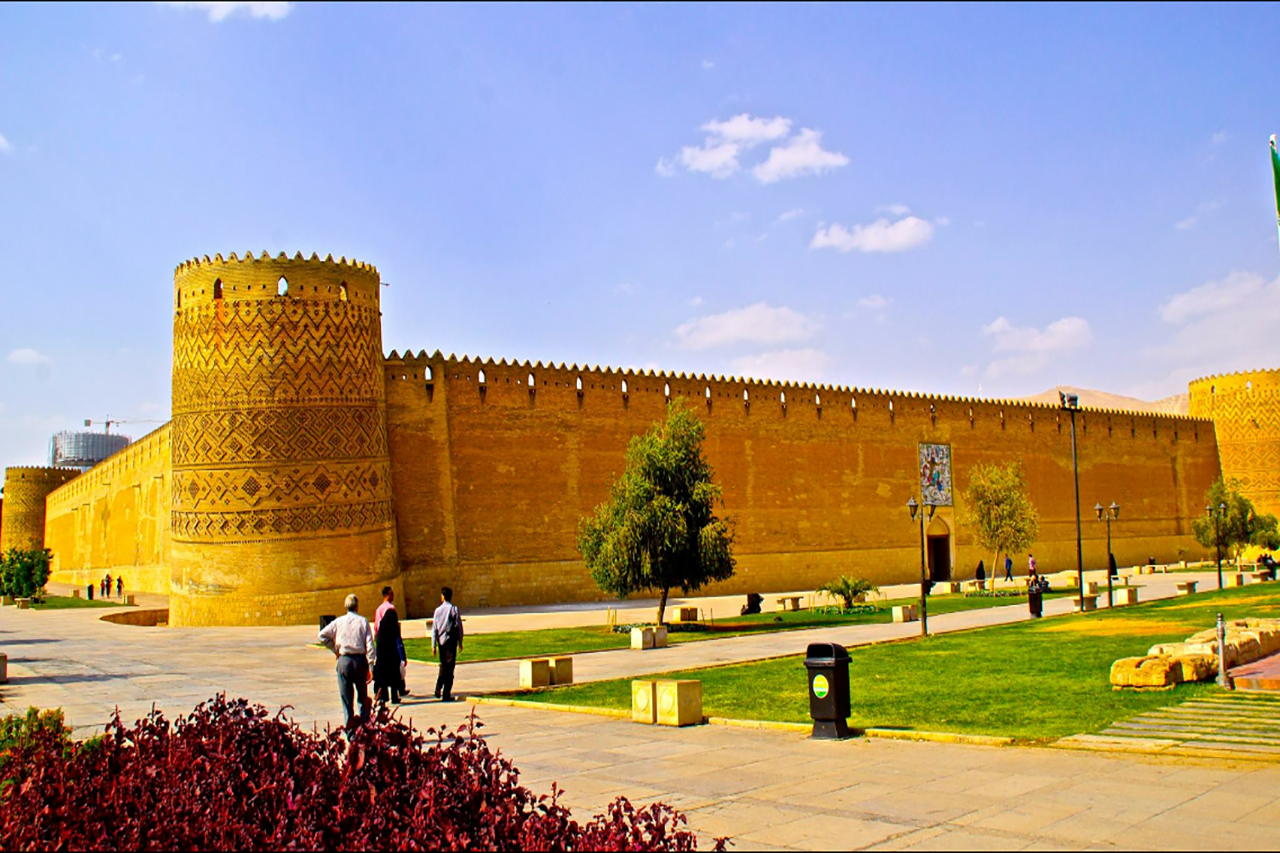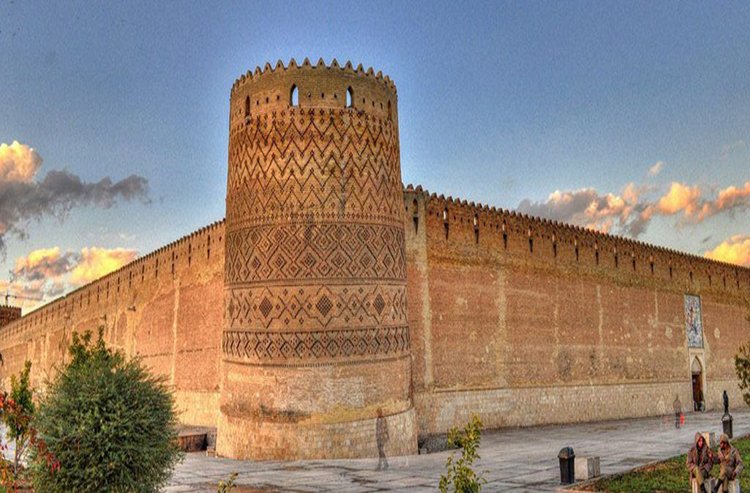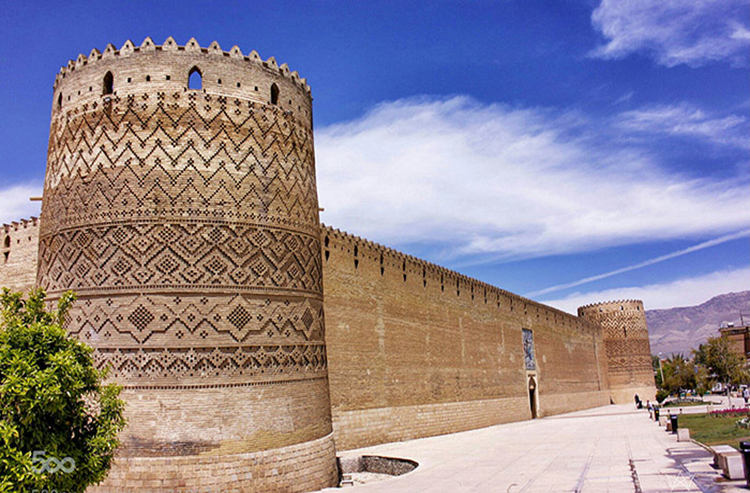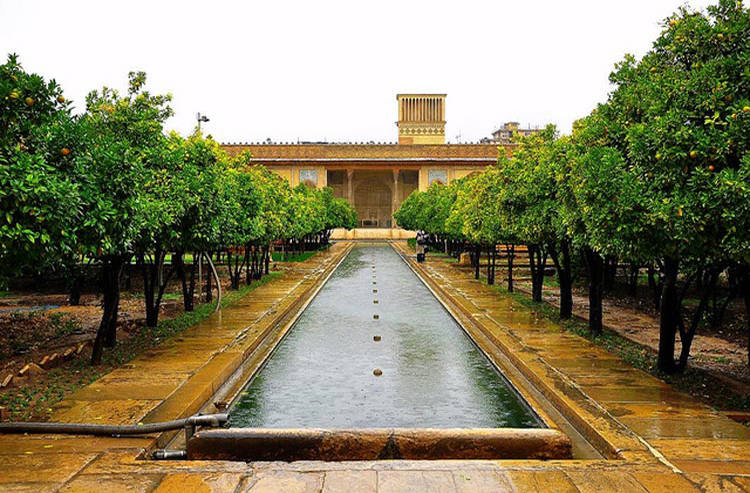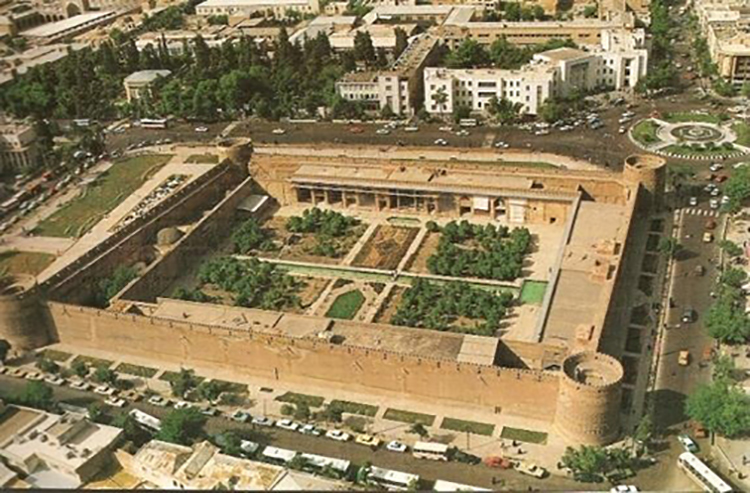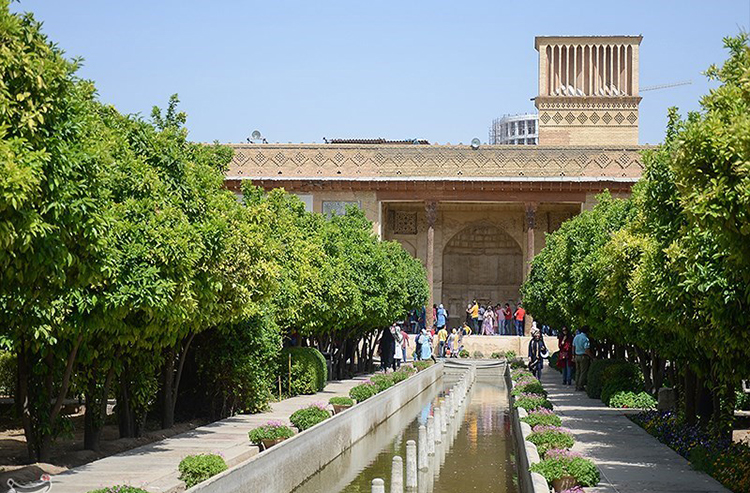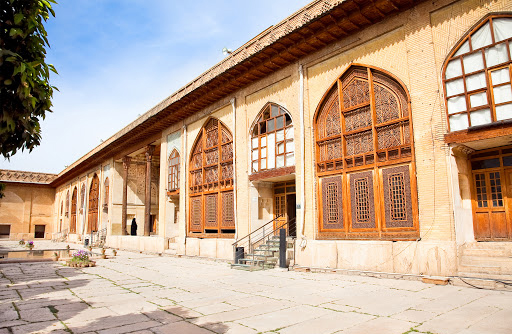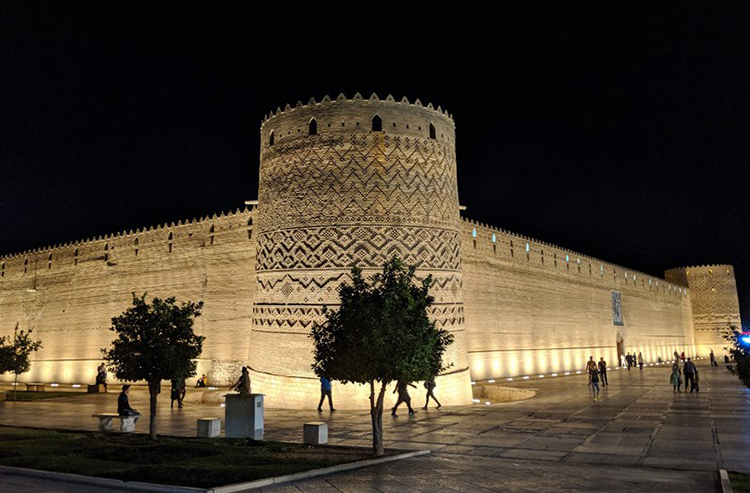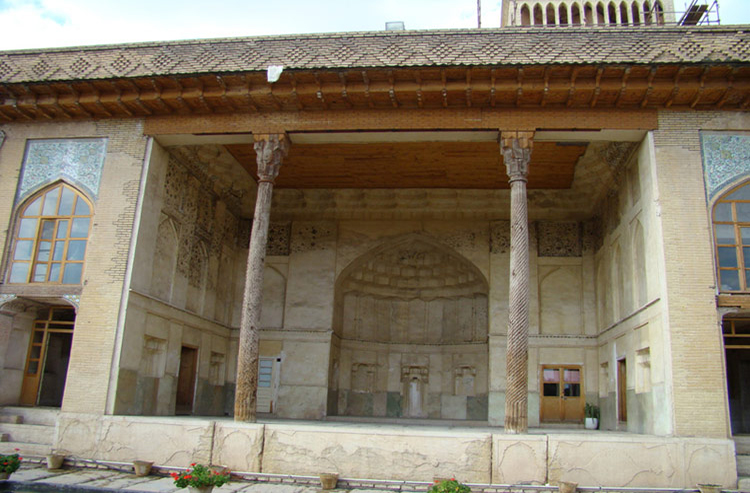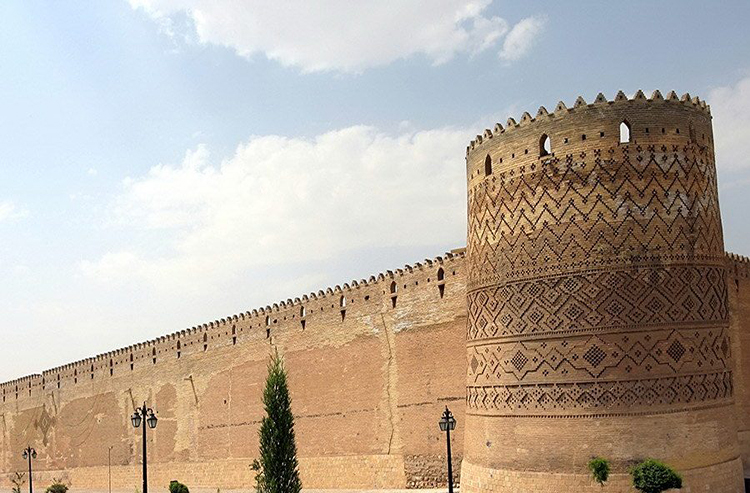Arg-e-Karimkhani (Karim Khan Citadel)
The Karim Khan Castle or Arg-E Karim Khan is a citadel located in the downtown Shiraz, southern Iran. It was built as part of a complex during the Zand dynasty and is named after Karim Khan, and served as his living quarters.
The design of the citadel combines military and residential architecture, for it was the home of Karim Khan and the military center of the dynasty.
Arg-e-Karim Khan was built in 1180 AH (1766-7). Karim Khan invited the best architects and artists of the time and bought the best materials from other cities and abroad for the construction of the citadel of Karim Khan, which was quickly constructed. During the Zand dynasty it was used by the king as living quarters. During the Qajar period it was used as the governor’s seat.
Prince Abdolhosein Mirza Farmanfarma, governor of Fars Province, ordered the miniatures in the citadel to be renovated.
After the fall of the Qajar Dynasty it was converted into a prison and the paintings were plastered over. In 1971 it was given to Iran’s Cultural Heritage Organization. The renovation of the citadel started in 1977.
This structure can be easily found at a corner of Shahrdary Sq close to Shiraz bazaar. The appearance of the building resembles a solid fortress entirely made from bricks with military as well as residential functions.
The structure reminds you of the plain brick-made buildings of 11th and 12th centuries when Seljuks were ruling in Iran. The corner bastions are very robust and decorated with bricks. One won’t realize how delicate some of the details inside the building could be without exploring it. At the south eastern corner of the citadel, a bastion is leaning like it’s going to fall down! It’s been like that for years and has been reinforced to stand on its place.
Above the entrance gate, you will notice a sizable tile-worked scene of Rostam’s battle against a demon. Rostam is the protagonist character of Shahnameh, the epic poem book of Ferdowsy, the most well-known Iranian poet of 10th and 11th centuries. After entering the vestibule a corridor leads you into the large courtyard with an astonishing orange garden!
The garden inside the large courtyard of Arg-e-Karimkhani takes approximately up to 80% of the area. The rest, courtyard floor, is all covered by marble stone from the time of construction. A pathway from the center of the garden leads to the middle of each side of the courtyard opposite a portico leading to some of the rooms of the building.
Main Rooms of Karimkhan Citadel
As you enter the courtyard from the vestibule, at the opposite side of the courtyard, under the large wind catcher, there’s a portico that could be seen right away. Inside the beautifully decorated rooms of this section, attractive wax statues revive the setting inside the court of Karim Khan where he met with officials and ruled over the territories under his domination.
The fresco embellishment of the walls and ceilings are fabulous examples of how beautifully Zand art vitalized official and non-official buildings of that period. A combination of gold leafs with relatively dark red colors were used to give elegant taste to the interior walls of the royal buildings.
Adjacent to this mail room, sometimes a couple of other rooms are opened to the public to see the local costumes of Iranian women of various ethnic groups. The colorful gowns seen here are still worn by local people when you travel to different parts of Iran.
Bathhouse of Arg-e-Karimkhani
On the very south eastern part corner of the courtyard, there’s a door that leads to the Arg-e-Karimkhani’s bathhouse, Hammam. This handsome bathhouse has got all the architectural sections of any similar structures, which make it worth a visit. The simple yet likable plasterwork decorations on the walls of this hammam, imply the love in flowers and nature, what Shirazi artists have always been inspired by.
Marble floors and seats, insulated pools for hot and cold water, clay-made pipes for heating beneath the floors and transferring water, and so forth are all observable and the echo returning your voice inside the big hall of this hammam reminds you of the lively setting of old bathhouses where royal family met and had themselves washed and massaged by the servants.
